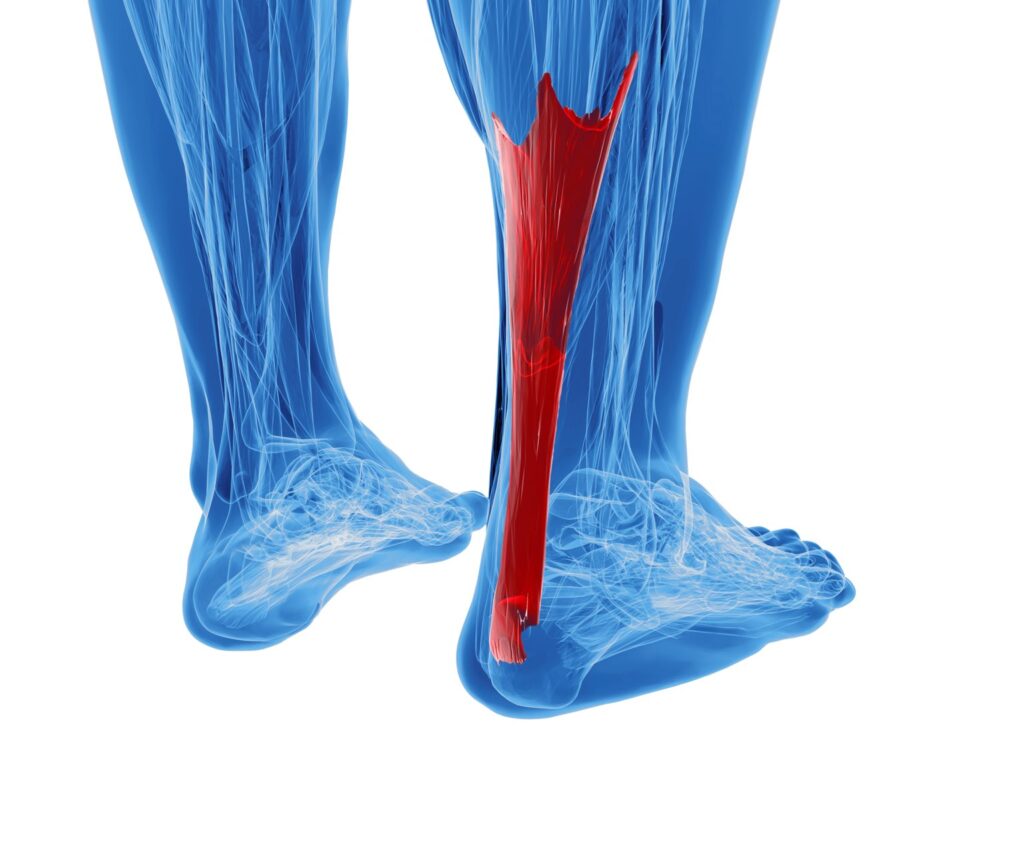If you ask 100 athletes – professional, armature, and recreational – what injury they’re most afraid of, chances are a good percentage of answers will be some sort of Achilles tendon injury. That’s because an injury to the Achilles tendon is not only extremely painful, but it also requires a very long, slow road back to recovery. And while the rate of Achilles tendon ruptures among the general population is only 1.8 people per 100,000 annually, that number rises to somewhere between 6,000 and 18,000 ruptures in athletes, and nearly one in four athletes suffer an Achilles tendon injury during their lifetime.
Even though you’re more likely to suffer an Achilles tendon injury if you’re an avid runner or a serious athlete, it is possible to sustain an Achilles injury going about your day-to-day life.
What is the Achilles tendon and what does it do?
The Achilles tendon, also called the heel cord, is the largest and strongest tendon in the human body. This strong fibrous tissue is six to 10 inches in length and can withstand forces of 1,000 pounds or more. Despite the common understanding of the Achilles tendon being at the back of the ankle, this powerful tendon starts in the middle of the calf and extends to the heel, connecting the calf muscles to the heel bone.

The Achilles tendon consists of two main parts: the thick, strong band of connective tissue that connects the calf muscles (gastrocnemius and soleus) to the heel bone (calcaneus), and the thinner connective tissue that attaches the plantaris muscle to the heel. The gastrocnemius muscle works to flex the knee and ankle, and the soleus muscle flexes and points the foot.
Together, these structures – including the Achilles tendon – play a crucial role in everyday activities like walking, running, and jumping.
Unfortunately, the tendon’s location at the back of the ankle makes it prone to stress and the following common Achilles tendon injuries.
Achilles Tendonitis
A common overuse injury, Achilles tendonitis often affects runners who increased the duration and/or intensity of their runs too quickly, middle-aged people who play sports like basketball or tennis, and people who have started a new activity that puts unaccustomed stress on the tendon. Symptoms of Achilles tendonitis range from a mild ache above the heel or in the back of the calf, morning tenderness or stiffness, and more severe pain during activities that stress the tendon (such as running or climbing stairs).
Achilles Tendon Pinch Test
Doctors often use the Achilles tendon pinch test to determine if Achilles tendon pain is caused by tendonitis or some other Achilles injury. To conduct the test, a doctor will have you lie down on your stomach with your legs flat on an exam table. They will then pinch both sides of the Achilles tendon, just above the bursae in the skinniest part of the ankle. The presence of pain typically indicates Achilles tendonitis.
Achilles Tendinosis
Unlike tendonitis, Achilles tendinosis is a long-term degeneration and thickening of the Achilles tendon. A chronic condition caused by microscopic tears of the tendon that develop over time, Achilles tendinosis is a chronic condition that can cause pain, swelling, and a feeling of weakness in the ankle. And while an X-ray may be able to show signs of chronic inflammation from Achilles tendinosis, the condition is typically diagnosed based on symptoms or – in more severe cases – an MRI.

Achilles Tendon Bursitis (Heel Bursitis)
While many people refer to this condition as Achilles tendon bursitis, the painful condition that affects the bursae (small, fluid-filled sacs that reduce friction between tendons and bones) around the Achilles tendon is actually heel bursitis. When these bursae become irritated and inflamed, they lead to pain and swelling in the heel (bursitis). This condition often accompanies Achilles tendinitis.
Achilles Tendon Rupture
The most serious of Achilles tendon injuries, a partial or complete tear in the Achilles tendon can result from sudden movements or forceful impacts. This injury is often associated with a popping sound, severe pain, and difficulty walking. Though an Achilles tendon rupture is typically painful, it’s possible to experience no signs or symptoms of a tear or rupture. Common symptoms include pain and swelling near the heel, an inability to stand on the toes of the injured leg, the inability to point the foot downward, difficulty pushing off the injured foot when walking, and feeling like you’ve been kicked in the calf.
Lump on Achilles Tendon
If you have a lump on your Achilles tendon, it’s important to see a podiatrist or a foot and ankle specialist to determine the underlining cause of the deformity. While it could be a symptom of an Achilles tendon injury, such as tendonitis, tendinosis, or heel bursitis, it could also be a heel bone spur, a ganglion cyst, gout, or even Haglund’s deformity.
The Achilles tendon is a vital structure responsible for various ankle movements. Understanding its anatomy and recognizing common injuries is the first step in seeking treatment. If you’re suffering from an Achilles injury or are experiencing any of the above symptoms, give us a call to schedule an appointment today.